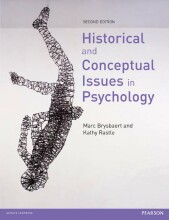Simmons, J. P., Nelson, L. D., & Simonsohn, U. (2011)
4 important questions on Simmons, J. P., Nelson, L. D., & Simonsohn, U. (2011)
In research, what is a false positive?
Why is a false positives one of the costliest errors in research?
- once they appear in the literature, false positives are particularly persistent. Because null results have many possible causes, failures to replicate previous findings are never conclusive. Furthermore, because it is uncommon for prestigious journals to publish null findings or exact replications, researchers have little incentive to even attempt them.
- false positives waste resources: They inspire investment in fruitless research programs and can lead to ineffective policy changes.
- a field known for publishing false positives risks losing its credibility.
According to the authors, what is the cause of heightened false positive rates due to researchers degrees of freedom?
- The exploratory behaviour of researchers degrees of freedom is not the result of malicious intend but rather:
- ambiguity in how best to make these decisions
- the researcher’s desire to find a statistically significant result.
- when we as researchers face ambiguous analytic decisions, we will tend to conclude, with convincing self-justification, that the appropriate decisions are those that result in statistical significance (p ≤ .05).
- Higher grades + faster learning
- Never study anything twice
- 100% sure, 100% understanding
Which solutions to avoid false positives due to researcher degrees of freedom do the authors give?
- Authors must decide the rule for terminating data collection before data collection begins and report this rule in the article.
- Authors must collect at least 20 observations per cell or else provide a compelling cost-of-data-collection justification.
- authors must report all variables collected in the study
- Authors must report all experimental conditions, including failed manipulations.
- If observations are eliminated, authors must also report what the statistical results are if those observations are included.
- If an analysis includes a covariate, authors must report the statistical results of the analysis without the covariate.
The question on the page originate from the summary of the following study material:
- A unique study and practice tool
- Never study anything twice again
- Get the grades you hope for
- 100% sure, 100% understanding
































